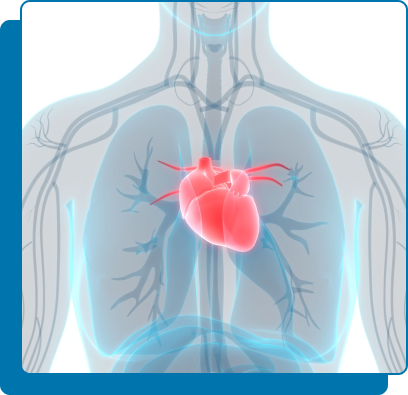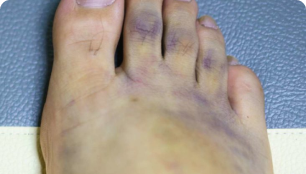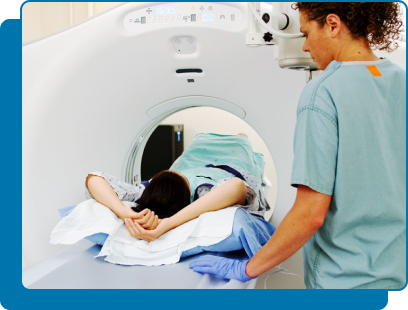We are here with the most affordable vascular operation in Hyderabad in a perspective to serve you the most precious vascular health in minimum price.


The aorta is the body’s biggest artery. The average diameter in the chest (thoracic aorta) is up to 28 mm, and around 20 mm in the abdomen (abdominal aorta). The normal diameter of the abdominal aorta can range between 14 – 30 mm.
When the abdominal aorta develops a weakness and bulges or expands in size more than 1.5 times its average normal diameter, it is called an aortic aneurysm. The pressure of the blood with every heart beat can cause further weakening of the aorta, causing it to bulge (much like a balloon). The term aortic aneurysm is used interchangeably with the term aortoiliac aneurysm, because the iliac arteries are quite often also aneurysmal in the presence of an abdominal aortic aneurysm and their treatment strategy is typically similar.
Isolated iliac artery aneurysms are rare. A common iliac artery is considered normal if its diameter is less than 17mm (males) or 15mm (females), ectatic if between 17-25mm, and aneurysmal if above 25mm.
These are a form of thoracoabdominal aneurysm if they develop close to the sources of the renal arteries in the abdominal aorta. Juxtarenal or pararenal aneurysms are those that affect the renal arteries.
Infrarenal aneurysms
The most prevalent kind (approximately 95%) is when they solely damage the portion of the aorta distally to the beginnings of the renal arteries.
The aortic wall continues to deteriorate and the aneurysm grows in size if it is not treated. The aneurysm eventually becomes large enough, the wall of which is too thin, and bursts. Internal bleeding from a burst aneurysm can be extremely severe, often resulting in shock and death.


Feeling of heartbeat-like pulsations in your belly.

Either lower back or stomach pain. It’s possible that the aneurysm is ready to burst if there is quick onset, acute pain.

Occasionally, parts of your feet and toes may become painful and discoloured in a bluish hue due to embolization, which is the downstream shedding of an aneurysm’s material. Blue toe syndrome is another name for peripheral atheroembolism.
In men, aortic aneurysms are more prevalent. You are more likely to get an aortic aneurysm if you are:
- A male who is older than 60. Age brings an increase in danger. 2-5% of males between the ages of 65 and 80 have a AAA. Up to 1% of women of the same age experience this.
- A person who smokes
- A person with coronary or peripheral arterial disease
- A man whose father or sibling has/had an aneurysm. Although hypertension, or high blood pressure, (especially if not well controlled) would intuitively seem to enhance the development and expansion of AAA, it has not been documented to be a factor in population-based studies.

- Not every abdominal aortic aneurysm needs to be fixed. The size of the AAA rises along with the danger of rupture and, thus, the need for repair.
- Your vascular surgeon, who is the only medical professional competent of conducting all varieties of AAA repair, will determine whether you need an operation to treat your AAA or not.
- Your vascular surgeon would often advise cautious waiting with further ultrasound exams if your AAA is modest (30-50mm) (usually every 6-12 months). In general, abdominal aortic aneurysms develop slowly. However, they grow more quickly the bigger they get.
- Repair may be recommended as an exception if a small aneurysm exhibits morphologic features that are thought to increase the risk of rupture, such as false aneurysms (versus true atherosclerotic aneurysms) or saccular (versus fusiform aneurysms), or (ii) if the aneurysm is inflamed and causes symptoms or hydronephrosis. Generally speaking, it is safer for you to get the AAA fixed if it is sufficiently large (above 50–55mm).
- Because the procedure has certain risks, the precise size for which it will be chosen will depend on any underlying medical issues you may have. For instance, issues with the heart, lungs, or kidneys raise the risk of surgery. After a successful open surgical repair, there is absolutely no chance of rupture. When the danger of rupture is greater than the risk of surgery, repair is usually advised. You will have a thorough discussion with your vascular surgeon on the potential risks and problems of the procedure.
- To reduce the risk of rupture, repair is advised for solitary common iliac aneurysms if the aneurysm is larger than 30 to 35 mm in diameter. A considerable consideration should also be given to simultaneous aortic replacement.
- If an abdominal aortic aneurysm ruptures, there is a fewer than 20% chance of survival.
The approach may be one of the following:
- Watchful waiting: As previously stated, aneurysms smaller than 50mm in diameter should be monitored every 6–12 months for any evidence of change using imaging tests such duplex ultrasonography or computed tomography (CT). If you smoke, you should stop, and if you have high blood pressure, you should take the necessary drugs on a daily basis. Your doctor will probably advise you to take a statin and an antiplatelet medication (Aspirin or a comparable product). It’s important to follow the doctor’s directions.
- If an aorto-iliac aneurysm of any size has an expansion rate that is quicker than typical, is more than 50–55 mm in maximum diameter, or if symptoms (pain in the lower back or abdomen) appear, repair will likely be necessary. The (open) surgical repair and the endovascular repair are the two forms of repair (EVAR). The best approach for your situation will be discussed with you by the vascular surgeon. Most people with an AAA will eventually need repair of their aneurysm with a graft.
For open repair, through an incision in your abdomen, the weakened part of your aorta is replaced with a graft, or a plastic tube, which allows your blood to flow through it.
The graft is made of very strong durable plastic material either Dacron (polyester) or polytetrafluorethylene (PTFE) in the size of normal aorta. The graft lasts for a lifetime and is very unlikely to require replacement. The operation is successful in 90-98% of cases.
Following the operation you will stay in the hopital for 5-8 days. It will take you 2-3 months for a complete recovery, but this period depends on your biological age.
Instead of the open repair, your vascular surgeon may consider this newer procedure, the endovascular repair. Endovascular or endoluminal means that the procedure is done through the wall of your arteries inside their lumen using very fine and long tubes, called catheters. This type of operation is less invasive and may be performed under regional anasthesia.
Initially, a small incision is made in each groin area. During the procedure, the vascular team will use x-ray pictures viewed on a screen to guide a tube (made of plastic and metal material), called stented graft or endograft, to the site of the aneurysm. Like the graft in open repair the endograft reinforces the aorta.
Your recovery time after EVAR is shorter than with the open repair and hospital stay may be reduced to 2-3 days. However, this procedure requires follow-up for a long time (probably for your lifetime) with imaging inestigations, currently CT scans, to confirm that it continues to function properly.
Your aneurysm may not be suitable for this procedure, because of its shape, its extent, its relation to the renal arteries etc. While endovascular repair may be a good option for some patients, in other cases open repair may be the best way to cure the problem.
Your vascular surgeon is the only physician qualified to offer all types of treatment for an AAA, and will help you decide the best method of repair in your particular situation.
It is prudent to improve your general health state even if you don’t need an operation at present:
- Quit smoking completely
- Exercise aerobically (brisk walking, cycling etc) for 25 to 30 minutes daily
- Maintain your ideal body weight
- Eat foods low in animal fat, cholesterol, and calories
- Avoid lifting weights over 10kg
- Take your medication to control blood pressure, blood cholesterol and diabetes
